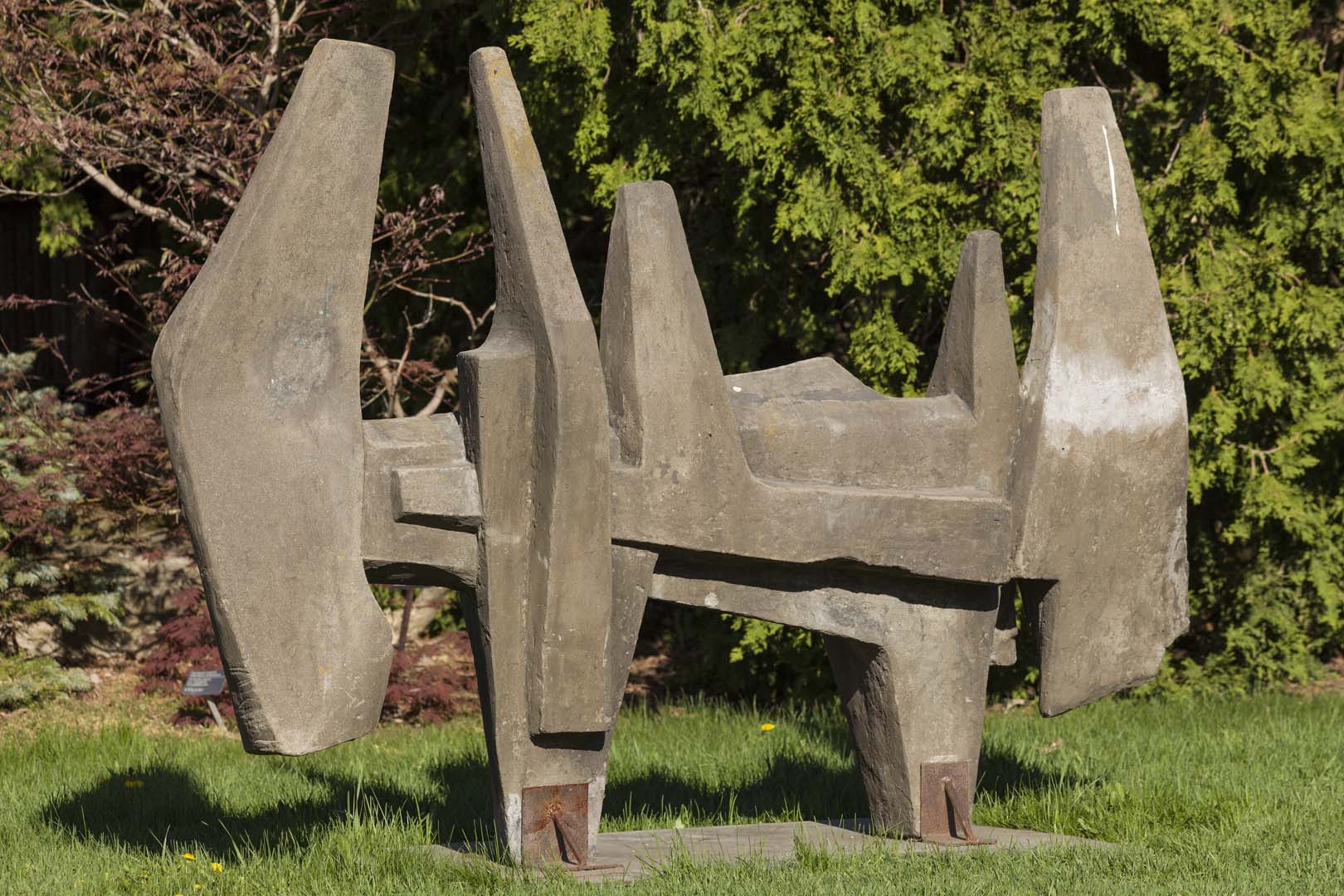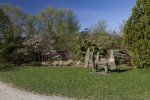Jean-Noël Poliquin
Épisode
1966
Presentation of the artwork
Presented in the centre of a grassy area at the Montréal Botanical Garden, Épisode is a non-figurative sculpture made of cast concrete with steel reinforcement. It consists of a rhythmic succession of vertical elements articulated horizontally, offering a balanced alternation of positive and negative space. The most massive elements, in the form of truncated arrows, are situated at the ends of the sculpture.In the early 1960s, Jean-Noël Poliquin worked with abstract forms, as did a large number of artists at the time. In addition to creating an architectural form, Poliquin’s ambition at the time when he made Épisode was to highlight the qualities of the material. In his earlier works, Poliquin used plaster, terra cotta, polyester, and bronze. The technique used for this piece, ciment fondu, and the horizontality of the ensemble help to give the artwork a sense of stability.
Associated events
The artwork was presented for the first time at the Shakespeare Festival in Stratford, Ontario, in 1966. That year, it was also in the event Confrontation 66 at Place Ville-Marie; the following year, it was in Confrontation 67 at Place des Arts. In 1968 and 1969, it was on display at Man and His World, on St. Helen’s Island, and it was moved to the Montréal Botanical Garden in early 1970.
Jean-Noël Poliquin
After studying with Albert Dumouchel at the Institut des arts graphiques de Montréal, Jean-Noël Poliquin (1927–99) lived in Europe in 1955–56. There, he worked at the Académie du Jeudi under the supervision of Arno Stern and became interested in art education for children. In the 1960s, he had exhibitions at Galerie Libre and Galerie Nova et Vetera, in Montréal, and presented his artworks at the Salon de la jeune sculpture at the Musée Rodin in Paris. In 1983, he executed the wall covering and handrail for the Fabre Métro station.






